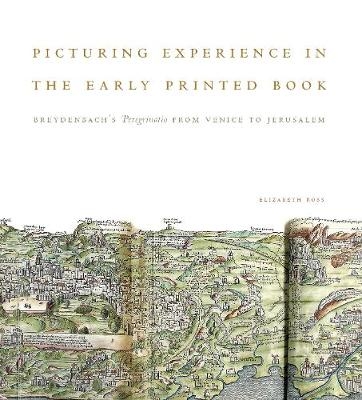
Picturing Experience in the Early Printed Book
Pennsylvania State University Press (Verlag)
978-0-271-06122-1 (ISBN)
Bernhard von Breydenbach’s Peregrinatio in terram sanctam (Journey to the Holy Land), first published in 1486, is one of the seminal books of early printing and is especially renowned for the originality of its woodcuts. In Picturing Experience in the Early Printed Book, Elizabeth Ross considers the Peregrinatio from a variety of perspectives to explain its value for the cultural history of the period. Breydenbach, a high-ranking cleric in Mainz, recruited the painter Erhard Reuwich of Utrecht for a religious and artistic adventure in a political hot spot—a pilgrimage to research the peoples, places, plants, and animals of the Levant. The book they published after their return ambitiously engaged with the potential of the new print medium to give an account of their experience.
The Peregrinatio also aspired to rouse readers to a new crusade against Islam by depicting a contest in the Mediterranean between the Christian bastion of the city of Venice and the region’s Muslim empires. This crusading rhetoric fit neatly with the state of the printing industry in Mainz, which largely subsisted as a tool for bishops’ consolidation of authority, including selling the pope’s plans to combat the Ottoman Empire.
Taking an artist on such an enterprise was unprecedented. Reuwich set a new benchmark for technical achievement with his woodcuts, notably a panorama of Venice that folds out to 1.62 meters in length and a foldout map that stretches from Damascus to Sudan around the first topographically accurate view of Jerusalem. The conception and execution of the Peregrinatio show how and why early printed books constructed new means of visual representation from existing ones—and how the form of a printed book emerged out of the interaction of eyewitness experience and medieval scholarship, real travel and spiritual pilgrimage, curiosity and fixed belief, texts and images.
Elizabeth Ross is Associate Professor of Art History at the University of Florida.
Contents
Chapter 1—Introduction: The Pilgrims and their Project
Bernhard von Breydenbach and his Pilgrimage
The Role of Erhard Reuwich
Chapter 2—The Authority of the Artist-Author’s View
The Censorship Edict of 1485
Breydenbach’s Self-Presentation as an Author
The Artist as Eye-Witness
These Animals are Truly Depicted as We Saw Them
Gart der Gesundheit (Garden of Health)
The Artist-Author’s View in Petrarch and Van Eyck
Appendix
Chapter 3—Mediterranean Encounters: Lady Venice, Holy Land Heretics, and Crusade
Crusade in the 1480s and the Turks Tithe
Mainz Printing and the Selling of Crusade
The Peregrinatio’s Journey between Venice and Heresy
Other Heretics of the Holy Land
Venice Influenced, Venice as Influence
What They Took from Peter Ugelheimer and What They Left Behind
Chapter 4—The Map of the Holy Land: Art-Making as Cartography
Mappae Mundi
The Burchard Map of the Holy Land
Portolan Charts
The Pilgrims’ Itinerary and Itineraries of Other Travelers
Netherlandish Pictorial Space
Chapter 5—The View of Jerusalem: Perspectives on a Holy City
The Centripetal View from Mamluk Monuments
The Franciscan Indulgenced View
Putting Islam at the Forefront of a Christian View
The Meaning of al-Haram al-Sharif for the Pilgrimage of 1483–84
Coda: The View from the Jewish Quarter
Bibliography
Index
| Zusatzinfo | 27 Halftones, color; 84 Halftones, black and white |
|---|---|
| Verlagsort | Pennsylvania |
| Sprache | englisch |
| Maße | 229 x 254 mm |
| Gewicht | 1406 g |
| Themenwelt | Kunst / Musik / Theater ► Kunstgeschichte / Kunststile |
| Reiseführer ► Naher Osten ► Israel | |
| ISBN-10 | 0-271-06122-7 / 0271061227 |
| ISBN-13 | 978-0-271-06122-1 / 9780271061221 |
| Zustand | Neuware |
| Haben Sie eine Frage zum Produkt? |
aus dem Bereich


